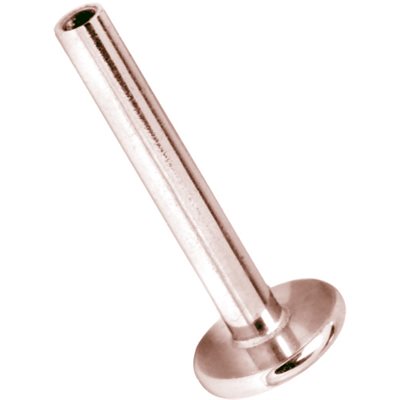- Homepage>
- Trinity Body Jewelry Online Boutique Canada>
- Body Piercing Jewelry Catalog>
- Loose parts>
- Internally Threaded parts>
- Stems (Base)>
- 24k rose gold plated steel internal labret stem
24k rose gold plated steel internal labret stem
Suggested Retail price: CAD $16.38
- Main material : Surgical Steel (316L-ASTM F138)
- Secondary material : None
- PVD Coating : 24k real rose gold
- Gem type : None
- Threading : Internal
- Classification : Wire
- Availability: In stock
Surgical Steel 316
SS316L is a surgical implant grade, which is the most used material for Body Jewelry. The two most common standards that apply to body jewelry made of steel are ASTM F138 and ISO 5832-1 which describe the qualities of steel for surgical implants.
The element in stainless steel that causes allergic reactions in some people is nickel. Polishing the jewelry to a mirror like luster results in a protective layer of chromium oxide, which reduces the release of the Nickel content into the tissue. Surgical Steel can be sterilized in an autoclave.
Check certificate and nickel release certificate for more info. You can also check the latest European directive regarding the use of nickel for body Jewelry.
MAGNETISM IN SURGICAL STEEL 316L
We had some returning questions regarding magnetism in Surgical Steel 316L. Some people still believe that if the steel is magnetic then it is not surgical steel. We would like to emphasize here one more time that this is not true. Stainless Steel 316L is a low-carbon form of 316 steel. Although it is non-magnetic when produced, it may become magnetic when worked.
Rose Gold PVD Coated
Real Rose Gold Alloy is coated using a PVD (Physical Vapor Deposition) process and used on various metals.
The jewelry is coated in a heated chamber under high vacuum. Electric voltage applied will form a plasma in the chamber and the introduction of various gases produces an ion bombardment. This bombardment atomizes the cathode material (Real 14-22K Rose Gold alloy) into tiny substances which are deposited on the jewelry. The result is a hardened layer, which is biocompatible. It can be autoclaved.


